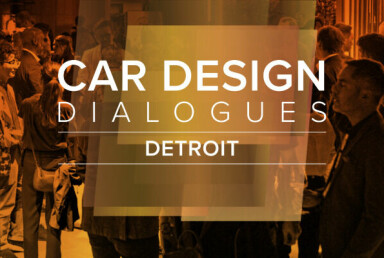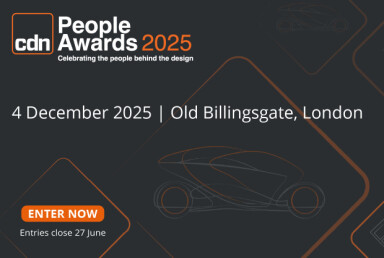Innovations in lighting
"The opportunities in lighting have exploded"

Read on for the key takeaways from CDN’s livestream on automotive lighting
Lighting has evolved from serving functional needs to shaping brand identities and the wider user experience. In a recent livestream hosted by Car Design News, we spoke to Bentley’s exterior design manager Nigel Ratcliffe; ChangAn Global Design Centre’s design manager Lin Zhang and Karma Automotive’s vice president of global design Nicholas David, to gain a deeper understanding on the topic.
The conversation started with a recognition of the boom in popularity of lighting and the central part it now plays in car design. David credited this to the rise of EVs, with strong lighting in the absence of a shiny chrome grille: "I think brand graphics are becoming less grille focused as we recede away from that." Ratcliffe agreed and noted that lighting as a department is also working more closely with UX: "I think the expectations of what customers are looking for has changed in line with a lot of other products we have in our lives like phones. It's opened up an enormous world of possibilities, both technologically and in terms of how it interacts with the customer."

When the topic of lighting design is brought to the exterior design team, it is, of course, only one of many factors at play. However, Ratcliffe suggests that the lighting is increasingly seen "as a project within itself" and is treated in the same way as an exterior surface.
Indeed, he compares it to a scaled-down version of exterior design with multiple critical considerations ranging from cost, technology availability, brand identity and how lighting responds to the owner. Designers constantly strive to create optimal, slim and efficient lighting packages, balancing their creative aspirations with the technical requirements of suppliers and electrical engineering teams.
It’s clear how collaboration across multiple disciplines makes for a successful lighting design. "We formed a small team between ourselves and UX," noted Ratcliffe, "to explore new technology and design ideas." David agreed, emphasising that designers need "creativity, awareness of new technologies, and the ability to work with interior, exterior and UX design teams.”
This collaboration is necessary when it comes what Ratcliffe described as the "iceberg" behind lighting modules: "What you don't see is the packaging aspects behind the modules... Technology suppliers are trying to keep up with that as well." In essence, the front of the head or tail lamp is only a section of the hardware; much of it is hidden behind the body panel.
Zhang agrees, adding that the definition of a car is fundamentally changing. "Automotive is no longer just about moving people from A to B," she noted. "Now we need more deeply collaborative approaches across design disciplines."
David discussed the challenge of lighting for low-volume, ultra-luxury brands like Karma and Bentley. In particular, the cost constraints for lamp homologation: "With high volume brands, you can make a lamp and you're amortising that across maybe hundreds of thousands of vehicles. But we are always looking for a solution that isn't going to break the bank."

Adding a CMF and China-forward perspective, Zhang added that lighting design is deeply influenced by cultural context. "In Chinese cities, light means power and modernity," she explained, noting how this urban lighting philosophy directly influences automotive design, at least for ChangAn.
When it comes to integrating lighting design at the start of a project, Zhang explained: "We try to find a relationship between the soft material and lighting, and consider how lighting can make the interior more refined. Lighting is very important, [so we] add it to our design process with the interior designer at the beginning of the project... I think the process for automotive design is changing."
Now we need more deeply collaborative approaches across design disciplines
Regulations are changing and differ across markets, which adds a layer of complexity onto the design process. David highlighted restrictions on front logo illumination and laser lights, which vary between regions like the US and Europe. Designers believe there's a great opportunity for more synergy between design teams, regulatory bodies and suppliers "to sit down and understand what we are all trying to work with."
Interestingly, some regulatory mandates have driven innovation. As David noted, mandated daytime running lights (DRLs) have "led to kind of new brand signatures.” Karma utilises "units that are already kind of pre-phased out" and incorporates them into design to save time. The Karma Kaveya, for example, features Americana-inspired pop-up headlamps, which are "trapdoors that slide and reveal the headlamps."

Lighting, he continued, is becoming a means of brand expression. "It welcomes you to the vehicle, talks to other drivers and makes you feel something different," David explained.
At ChangAn, Zhang views lighting as "a new decoration material" that can transform interior experiences. She explained the importance of lighting that "can deeply combine with software to match the request of each person in the car."
Lighting now adds such a depth of expression to our products
The conversation turned to the future of lighting design, and based on recent trends the expectation is to see a continued focus. Ratcliffe explained that over the last 10-15 years, "the opportunities within lighting have really exploded... It adds so much character to our products that can be expressed in a far more dynamic way than static body panels."
Zhang viewed this evolution through a holistic lens, describing how lighting can now "help create a good experience" by adapting to different passengers' needs, reflecting her team's innovative approach of integrating CMF, UX and lighting.
The role of artificial intelligence is also emerging. David explained how AI is being used to create digital well-being experiences, with systems that can sense a driver's mood and "intuitively make the music lourder to wake you up or turn the air conditioning up."
On the other hand, Ratcliffe doesn't believe AI is quite up to scratch when it comes to lighting design: "We find that there's a lot of lighting software, but it doesn't give what we're looking for."
To conclude, as David aptly put it, lighting is no longer just about illumination, but about "illuminating the experience between you and the vehicle."




